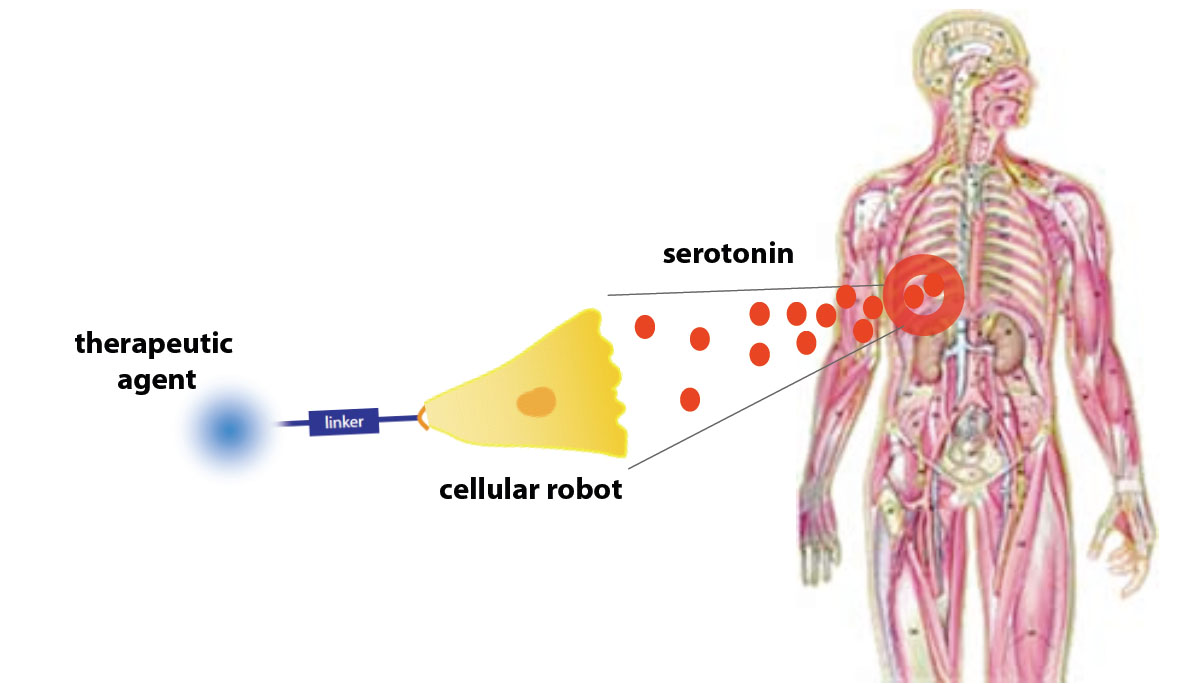Team:UCSF/Future Applications
From 2009.igem.org
(Difference between revisions)
(→VISION: Example of a possible application) |
|||
| Line 8: | Line 8: | ||
* they are small and therefore '''hard to find''' | * they are small and therefore '''hard to find''' | ||
* they '''secrete high levels of serotonin''' - a neuroactive hormone '''detected by Gi-coupled GPCR''' | * they '''secrete high levels of serotonin''' - a neuroactive hormone '''detected by Gi-coupled GPCR''' | ||
| + | |||
| + | |||
| + | |||
Our approach could be used to '''engineer a cellular robot''' that: | Our approach could be used to '''engineer a cellular robot''' that: | ||
| Line 15: | Line 18: | ||
or | or | ||
* '''delivers targeted chemotherapeutic drugs''' to kill tumor | * '''delivers targeted chemotherapeutic drugs''' to kill tumor | ||
| + | |||
| + | |||
| + | |||
[[Image:VISION.jpg|500px|thumb|center|'''VISION:''' We could use our engineered cellular robots to home in on carcinoid tumors to deliver imaging or therapeutic reagents.]] | [[Image:VISION.jpg|500px|thumb|center|'''VISION:''' We could use our engineered cellular robots to home in on carcinoid tumors to deliver imaging or therapeutic reagents.]] | ||
Revision as of 00:48, 21 October 2009
VISION: Example of a possible application
In the previous sections we have shown you that we can steer cells to new targets, control their speed and attach a payload. Here we describe our vision of what we could do with these engineered cells in the future.
One target for our cells could be carcinoid tumors:
- these tumors are located in the gut and lungs and are often malignant
- they are small and therefore hard to find
- they secrete high levels of serotonin - a neuroactive hormone detected by Gi-coupled GPCR
Our approach could be used to engineer a cellular robot that:
- detects serotonin and can chemotax to carcinoid tumors
- delivers imaging reagents (to aid in surgical removal)
or
- delivers targeted chemotherapeutic drugs to kill tumor
 "
"
